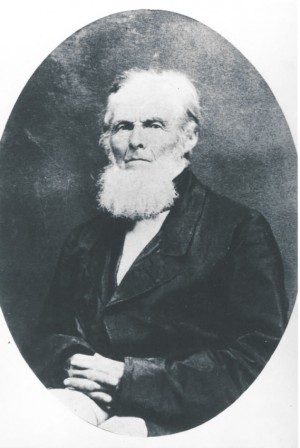In the long ugly history of race relations in the United States, there have been a lot of bad actors and finger pointing. Many of the heroes of our nation’s founding and formative years are found to have feet of clay and their role in slavery is a topic everyone who is white feels uncomfortable talking about. We would rather keep our blinders on, “feel good” and hold dear nostalgic memories of the fading pictures on the school room walls and stirring stories found in childhood books. However, if the telling of the story of our country is incomplete many true heroes are overlooked.
The history of Indianapolis and race begins with the Northwest Ordinance of 1787 which prohibited slavery in the United States territory north of the Ohio River. This area would eventually form the states of Ohio, Indiana, Illinois, Michigan, Wisconsin, and a small portion of Minnesota. Despite the slavery prohibition, when the Indiana Territory was formed there were some powerful persons like territorial governor and future president William Henry Harrison, the hero of Tippecanoe, who advocated setting aside this prohibition and admitting slavery into the new territory. In lieu of this, the territorial legislature permitted slaves to brought into Indiana and then for the owner to make a contract binding them to service for any number of years. Friends of the “peculiar institution” were finally thwarted in their efforts with the adoption of Indiana’s first constitution which firmly stated there would be no slavery in the state and then their candidate for governor narrowly lost the 1816 election when Indiana was admitted into the Union. Five years later Indianapolis was laid out as the capital city of the Hoosier State and within the decade the fledgling frontier capital became the center of a major test of the Northwest Ordinance.
Late fall rains had by December 1829 swollen the streams and rivers of central Indiana and since there was no bridge across White River, transiting the waterway by ferry or fording it was impossible when William Sewall of Virginia arrived in Marion County with his family and slaves Nelly Richardson, her infant children Susan Richardson and Clary Ann Richardson, and Mary Green. While waiting for the floodwaters to subside, Sewall stayed at the house of Mr. Stoops and initially said that he had left Virginia, a slave state, and was going to settle in Missouri, a slave state. If that was his intent, then Sewall could legally transit Indiana with his slaves. However, after a few days at Stoops, Nelly Richardson and her children went to the house of Robert Hanna, an overseer of the poor, and told him that Sewall in fact was going to settle in Illinois, a free state, not Missouri and he planned to “run his negroes into Missouri for the purpose of selling them.” With this information, Hanna consulted with attorney Calvin Fletcher, Governor James B. Ray, and others. It was their consensus that if Sewall was not going from one slave state to another with his slaves, they were entitled to their freedom under the law.
When Sewall learned that his slaves were being sheltered, he went to William Logan, who had given refuge to the women, and with the assistance of Wilford Ungles and Archibald “Archy” Lingenfelter, who was known for being plastered “until he was finally overtaken by a too fond indulgence in the use of ardent spirits,” forcibly took the women and “detained them to prevent them again being inveigled away, until he can proceed on his journey.” Logan then petitioned for a writ of habeas corpus on behalf of Nelly Richardson, Susan Richardson, Clary Ann Richardson, and Mary Green in Marion County circuit court, claiming they were “illegally imprisoned and detained in the custody of William Sewall.” The writ was granted, and Sewall brought the women to court on December 25, 1829 – Christmas Day.
At noon on Christmas Day, Judge Bethuel F. Morris gaveled the court into session. The room was full of spectators, including most members of the Indiana legislature which shared space in the old courthouse and had just adjourned. Attorneys Hiram Brown, Henry Coburn, and Calvin Fletcher represented the women while attorneys William Wick and Edward Hennegan represented Sewall. Fletcher wrote in his diary:
“Great excitement among the people of the county. Their sympathies were alive for the woman & childrin while the members of the legislature & some few who in our own place yet countenance the horrid trafic were almost clamerous for the pretended owner.”
The court heard testimony from Ungles and Lingenfelter, witnesses for Sewall. There was “much prejudice” raised against Hanna, Stoops, Gov. Ray, and Johnson, witnesses for the women. The proceedings closed about 8:00 p.m.
Judge Morris approached the case before him “fearlessly,” and the next day handed down his opinion that a man leaving a slave state with his slaves for the purpose of settling in a free state, that the moment his slaves reached a free state they were free. The decision was not well received by the populace and “at least a majority of the members of the legislature” believed the decision was wrong basing their opinion on “some exciting cause…not from sober reasoning from the principles contained in the constitution and laws of the country.” History has not recorded where Nelly Richardson, her children, and Mary Green settled after they gained their freedom or as Fletcher observed, “What violence, what outrages may yet be committed on the poor negroes I know not.”
Judge Bethuel F. Morris was an early hero in what, in time, would become a long line of judicial heroes upholding minority rights. He considered Nelly, et. al. vs. Sewall “as purely a question of right to be determined upon legal principles according to the law of the land; unconnected with consideration of public convenience or political expediency, and uninfluenced by the factious excitement of the moment.”



